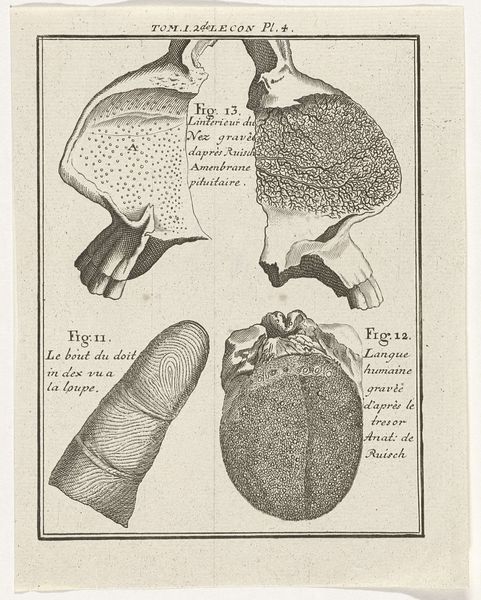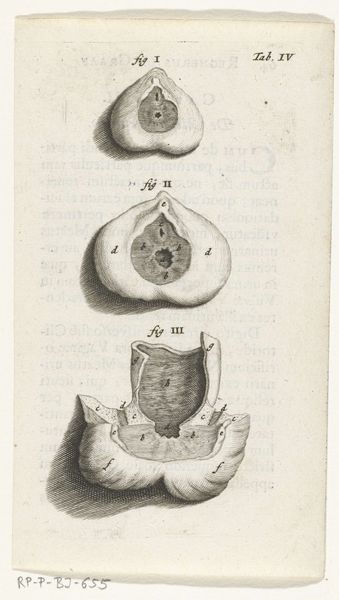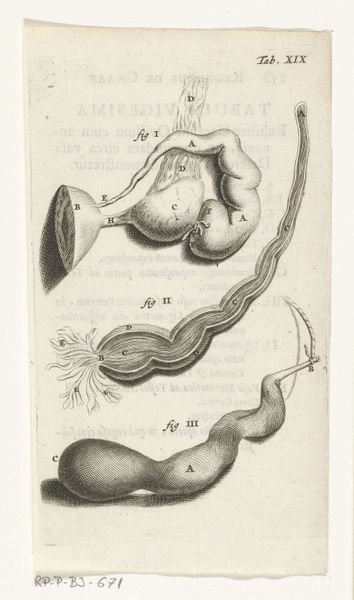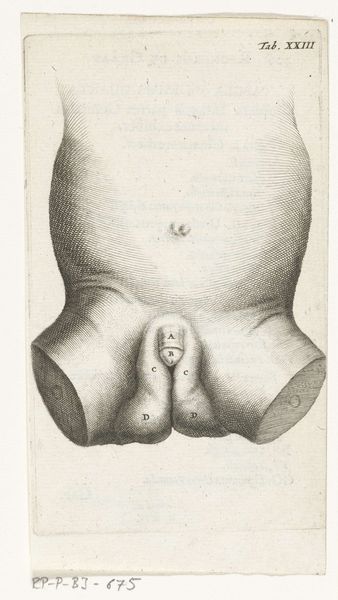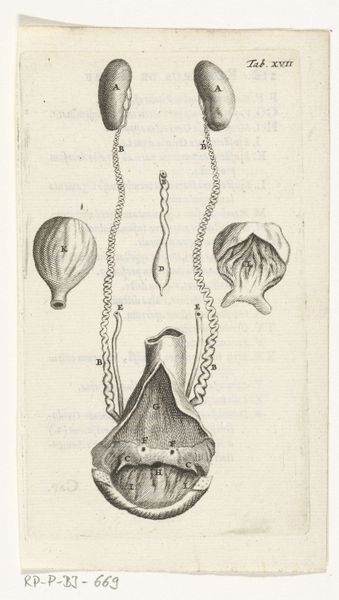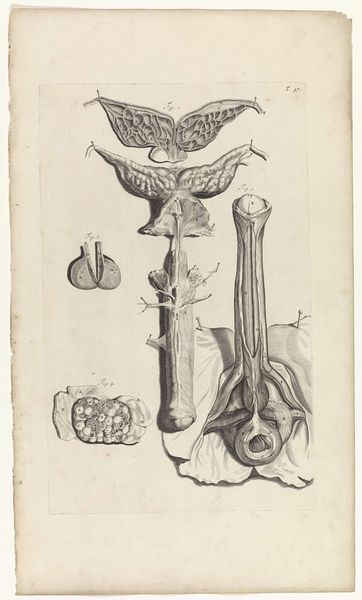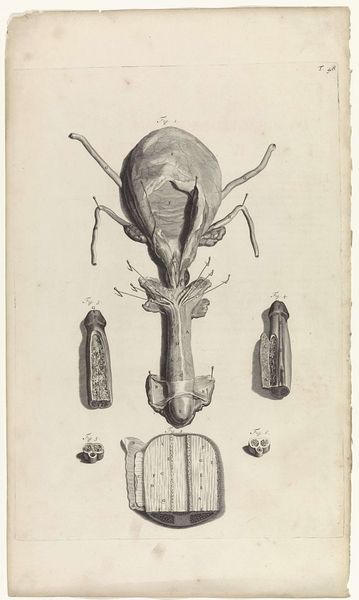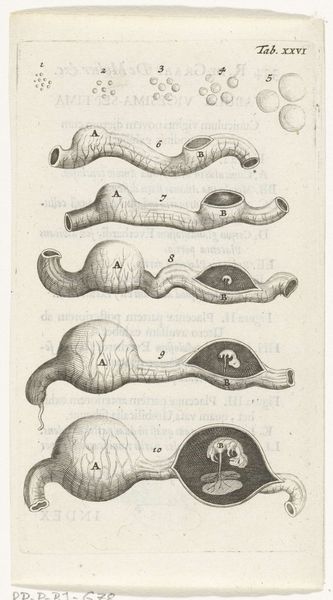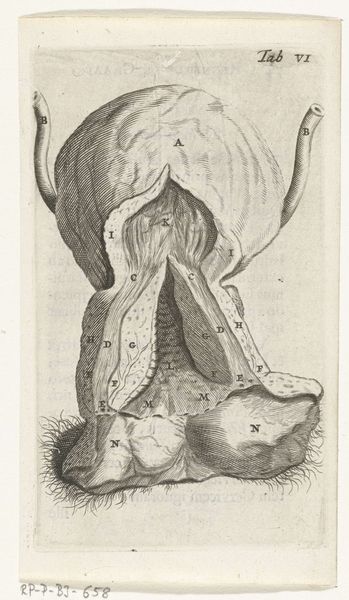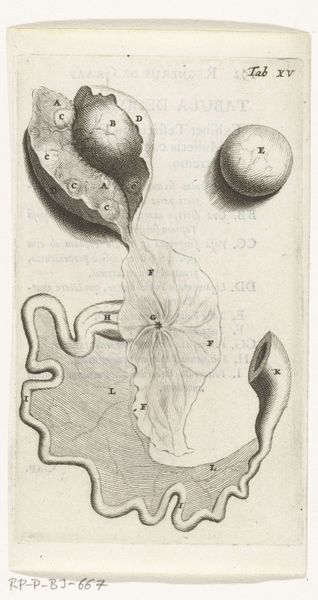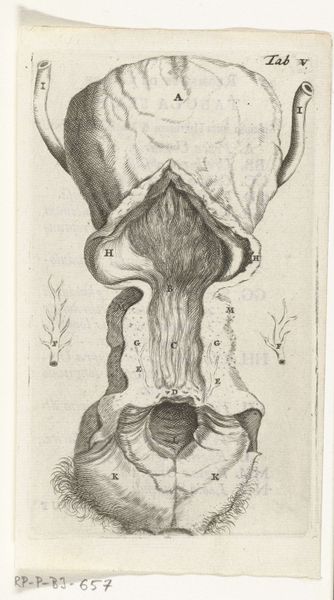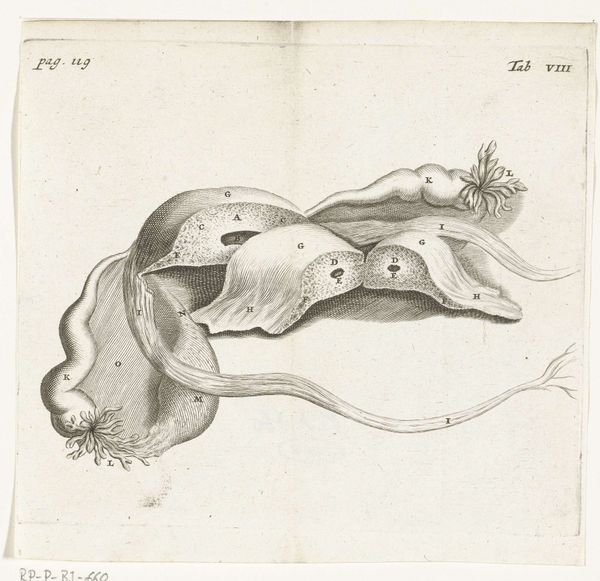
drawing, paper, ink, engraving
#
drawing
#
paper
#
form
#
ink
#
line
#
history-painting
#
academic-art
#
engraving
#
realism
Dimensions: height 140 mm, width 80 mm
Copyright: Rijks Museum: Open Domain
Curator: Here, we have Hendrik Bary's "Anatomische afbeelding van de clitoris, de vagina en de uterus," created in 1672. It's an engraving in ink on paper currently held at the Rijksmuseum. Editor: Well, it’s certainly… graphic! The starkness of the monochrome and the precise linework give it a very clinical, detached feel. Curator: Indeed. The linear quality stems from the engraving technique, quite common for anatomical illustrations at the time. These images played a key role in the burgeoning scientific understanding of the human body. Note the numerical and alphabetical annotations in the image—elements designed to convey scientific validity in academic art of this period. Editor: Precisely! That's interesting because although clinical, the artwork has an aura of mystery given the secrecy surrounding the female body back then. It reveals that even within the confines of scientific objectivity, cultural biases often have seeped into anatomical art and research. The realism, as its rendered, may have struck a nerve in its time. Curator: And this piece would have certainly circulated within specific intellectual and medical circles. Remember that anatomical illustrations served as essential teaching tools and reference materials. Consider its role in a world with drastically different perceptions of gender and reproduction, with little to none access to photography! Editor: It prompts a question, doesn't it? Who exactly was viewing it? How was their view shaped not only by science but social structures? It makes one appreciate that every image, however technical, also contributes to our broader historical narrative. Curator: Precisely, we move away from viewing it purely as objective observation to examining the context in which its very precise line work takes on extra symbolic weight. It highlights how artistic methods contributed to the advancement and shaping of perceptions regarding our anatomy and historical views. Editor: Thinking about it this way enriches the dialogue we can have with an art piece, turning what could have been an objective art piece into a powerful mirror reflecting societal values and shifting beliefs.
Comments
No comments
Be the first to comment and join the conversation on the ultimate creative platform.
